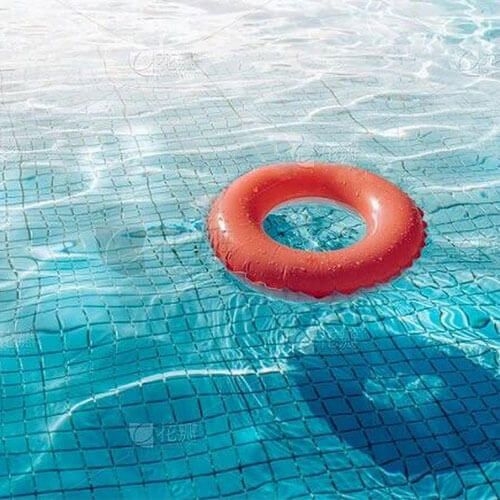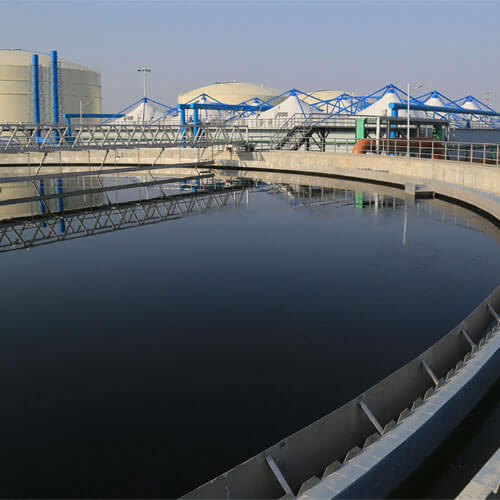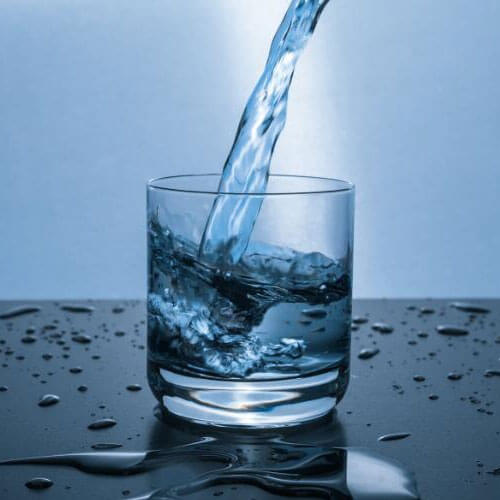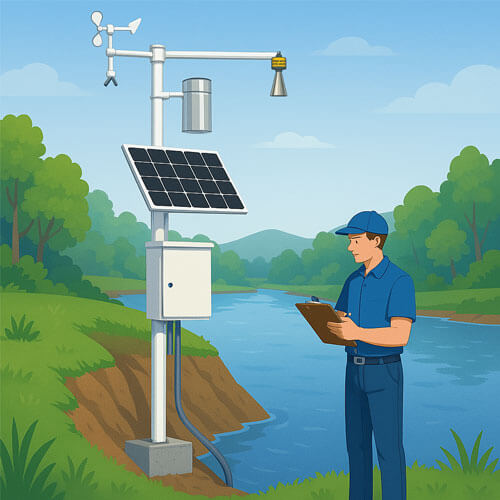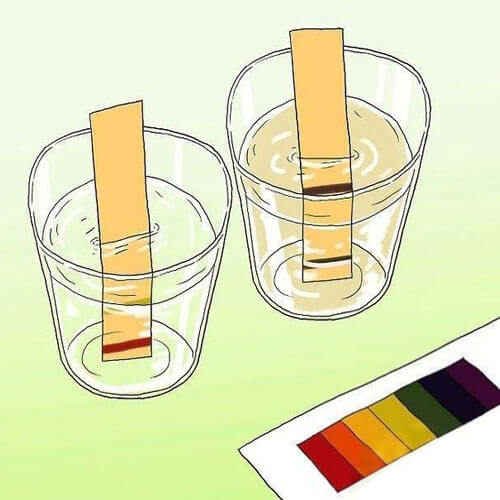A consistently balanced pool pH is essential for ensuring water quality, user safety, and equipment longevity. The pH value indicates the acidity or alkalinity of water, measured on a scale from 0 to 14, with 7 representing a neutral state. For swimming pools, the ideal pH level typically falls between 7.2 and 7.8.
The causes of high pH in pool include add alkaline solutions, carbon dioxide loss, high alkalinity, temperature fluctuations, and environmental contaminants such as debris and other contaminants.
Why is the pH level of swimming pool important?
pH is a measure of the concentration of hydrogen ions in a solution, which determines whether the water is acidic or alkaline. It operates on a logarithmic scale from 0 to 14—where 7 is neutral, values below 7 indicate increasing acidity, and those above 7 reflect increasing alkalinity. Importantly, each full-point change on the pH scale represents a tenfold shift in hydrogen ion concentration.
According to the latest guidelines issued by the U.S. Centers for Disease Control and Prevention (CDC) in 2024, the ideal pH range for swimming pools falls between 7.2 and 7.8, with 7.4 to 7.6 considered optimal. This specific range helps maintain the effectiveness of chlorine-based disinfectants and minimizes skin and eye irritation for swimmers. The CDC also recommends that free chlorine levels in pool water remain at or above 1 part per million (ppm) to ensure proper sanitization.
What causes high pH level in pool?
Understanding the underlying causes of elevated pH in pool water is critical for effective water quality management. By identifying the contributing factors, pool owners and operators can implement timely corrective actions and avoid persistent pH imbalances.
Introduction of alkaline compounds
One of the most common causes of rising pH levels is the introduction of alkaline substance(smaterials with a pH above 7). Products like sodium bicarbonate (baking soda) are frequently added to stabilize total alkalinity. However, excessive application can drive pH levels beyond the optimal range, making them harder to regulate.
Additionally, calcium carbonate, often present in municipal tap water, may accumulate in pools during routine top-ups. As this mineral dissolves into the water over time, it gradually increases both alkalinity and pH. Routine water testing is essential to monitor such changes and adjust accordingly using pH-lowering agents such as muriatic acid or dry acid (sodium bisulfate).
Loss of carbon dioxide (CO₂)
Carbon dioxide plays a vital role in maintaining the pH balance of pool water. When CO₂ escapes due to aeration, heavy splashing, or water movement, the water becomes less acidic, causing the pH to rise. This process, known as outgassing, is common in pools with waterfalls, spas, or high swimmer activity.
To mitigate this, CO₂ levels should be routinely monitored using specialized testing kits. When CO₂ loss is significant, adjusting the pH by adding acid-based chemicals(such as sodium bisulfate or muriatic acid) or reintroducing CO₂ into the water can help restore balance. Saltwater systems, which use electrolysis to generate chlorine, are less affected by pH swings and can provide more stable water chemistry.
High alkalinity
When total alkalinity in pool water is higher than recommended, it indicates an overabundance of bicarbonate ions, which serve as chemical buffers. This condition not only makes it harder to maintain chemical balance but may also lead to scaling, cloudy water, and reduced effectiveness of chlorine sanitizers.
To address high alkalinity and subsequently high pH in a swimming pool, it is crucial to perform routine water testing using reliable pH sensor or digital analyzers. If the readings show high alkalinity, acidic compounds such as muriatic acid or sodium bisulfate should be introduced carefully to bring the alkalinity down. This, in turn, helps normalize the pH level and restore water chemistry to the ideal parameters.
Environmental factors
Filling a pool with hard water—water rich in calcium, magnesium, or other minerals—can naturally elevate pH and total alkalinity. These minerals increase water hardness and can lead to scaling, cloudy water, and difficulty maintaining pH balance.
Vegetation and natural debris are also contributors. Leaves, pollen, dust, and organic materials from nearby plants or trees may enter the pool via wind or rainfall. These substances can decompose or interact with chlorine, indirectly affecting the pH levels. Regular skimming, proper filtration, and consistent chemical monitoring can help control these variables.
Pool water temperature changes
Temperature fluctuations have a significant impact on the chemistry of swimming pool water—especially pH stability. This is largely due to the direct correlation between temperature and chemical reaction rates. As water temperature increases, reactions involving sanitizers and pH adjusters accelerate, causing these chemicals to be consumed more rapidly.
For instance, chlorine demand rises with temperature. Not only do microorganisms multiply more quickly in warmer water, but chlorine also degrades faster, reducing its ability to disinfect effectively. To maintain sanitary conditions under these circumstances, higher doses of chlorine may be necessary, but this also increases the risk of pH imbalance if not carefully managed.
Another important consequence of elevated water temperatures is enhanced evaporation. Higher evaporation rates lead to a concentration of dissolved solids, including calcium, magnesium, and bicarbonates. This concentration effect can increase both alkalinity and pH, contributing to scaling issues on pool walls and equipment surfaces.
To mitigate the effects of temperature-induced evaporation, using a pool cover during periods of inactivity is highly recommended. Covers help preserve water volume, reduce chemical loss, and stabilize pH by minimizing environmental exposure. This approach is effective for both indoor and outdoor pools, especially during warm seasons or in high-sunlight regions.
External temperature changes
During hot weather or peak usage periods, more swimmers enter the pool, introducing contaminants such as sweat, sunscreen, cosmetics, and bodily fluids. These can interact with disinfectants and affect the water’s chemical composition, often pushing the pH upward.
To counteract this, pools should be monitored frequently with both temperature sensors and pH sensors. Increasing filtration cycles and applying shock treatments during periods of high use may also help keep the pool balanced.
Problems with high pH in pool
Maintaining the correct pH balance is essential for ensuring both water quality and swimmer safety. When pool water becomes too alkaline (pH above the ideal range), several critical issues can arise that compromise sanitation, infrastructure, and user comfort.
1. Reduced chlorine efficiency
High pH level significantly diminishes the effectiveness of chlorine-based sanitizers. As pH rises, a larger portion of chlorine converts into its inactive form, rendering it far less effective at neutralizing pathogens. This reduction in disinfection power can allow harmful microorganisms such as bacteria and algae to multiply, increasing the risk of recreational water illnesses (RWIs).
2. Cloudy and unclear water
Another common consequence of elevated pH is turbid or cloudy pool water. This often occurs due to the precipitation of calcium carbonate, especially in pools with high calcium hardness. These suspended particles affect visibility, alter the appearance of the pool, and indicate deeper imbalances in water chemistry that must be corrected to restore clarity.
3. Scaling and equipment damage
Prolonged high pH can result in mineral scaling, particularly from compounds like calcium and magnesium. These minerals deposit on surfaces including pool tiles, piping, and filtration systems, forming a rough, crusty buildup. Over time, this not only reduces system efficiency but also accelerates wear and potential damage to pumps, heaters, and filters.
4. Corrosion of metal fixtures
Despite common misconceptions, high pH level doesn’t only cause scale—it can also contribute to metal corrosion, especially in combination with fluctuating chlorine levels. Components made of copper, stainless steel, and other alloys are susceptible to chemical degradation under unstable water conditions, leading to discoloration, leaks, and mechanical failures.
5. Skin and eye irritation
Swimmers may notice symptoms such as red eyes, itchy skin, or dryness after exposure to water with elevated pH. This discomfort stems from the imbalance in water chemistry, which disrupts the skin’s natural pH and irritates mucous membranes. For public or commercial pools, such issues can result in user complaints, reduced attendance, and increased maintenance requirements.
How to lower ph in pool?
Effective ways to lower the pH level of a swimming pool include:
- pH decreasers
- Carbon dioxide off-gassing
- Regular water testing and maintenance
- Balancing alkalinity
- Environmental management
pH decreasers
One of the most effective methods for correcting elevated pH levels in swimming pools is the application of pH-lowering chemicals, commonly referred to as pH decreasers. The two primary agents used for this purpose are muriatic acid (hydrochloric acid) and sodium bisulfate (dry acid).
Due to the corrosive nature of these acids—particularly muriatic acid, which is highly reactive—it is critical to adhere strictly to safe handling procedures. Always add acid to water (never the reverse), wear proper personal protective equipment (PPE), and ensure good ventilation when dosing.
Improper dosing can result in overcorrection, driving the pH below the recommended range (7.2–7.8), which may cause corrosion of metal components, eye and skin irritation, and damage to pool finishes. Therefore, the dosage should be calculated precisely based on:
- Pool volume (liters or gallons)
- Current pH reading
- Target pH level
Use the dosage guidelines provided by the chemical manufacturer or consult with a certified pool technician to avoid chemical mismanagement.
Carbon dioxide off-gassing
Encouraging the natural release of dissolved carbon dioxide (CO₂) from pool water can gradually reduce pH. This process, known as aeration, increases gas exchange at the water’s surface. Techniques include:
Enhancing water agitation through water features, fountains, or air blowers
Optimizing pump circulation rates to expose more water surface area to air
While this method does not yield immediate results, it is ideal for minor pH adjustments and is particularly beneficial in settings where chemical use is restricted.
Regular water testing and maintenance
Regularly testing the pH and other water parameters is key to maintaining proper water chemistry in your pool. Use a reliable water quality sensors and make necessary adjustments as required.
Additionally, ensure proper filtration, circulation, and sanitation to prevent the accumulation of contaminants that can affect pH balance.
Balancing alkalinity
Since total alkalinity acts as a buffer system for pH, keeping it within the recommended range (typically 80–120 ppm) is critical. High alkalinity can push pH upward and hinder correction efforts.
Use alkalinity reducers like muriatic acid or sodium bisulfate to lower high levels.
For low alkalinity, apply sodium bicarbonate (baking soda) in controlled doses.
Adjust in small increments and re-test to avoid overcorrection.
Environmental management
External elements such as dust, pollen, rainwater, and UV radiation can introduce variables that disrupt water chemistry. To limit their impact:
- Install and regularly use a pool cover, especially during non-use periods
- Perform routine skimming and vacuuming to remove organic matter
- Trim overhanging vegetation and ensure landscaping is designed to minimize runoff into the pool
Proactive environmental management helps stabilize pH over time and reduces chemical demand.

